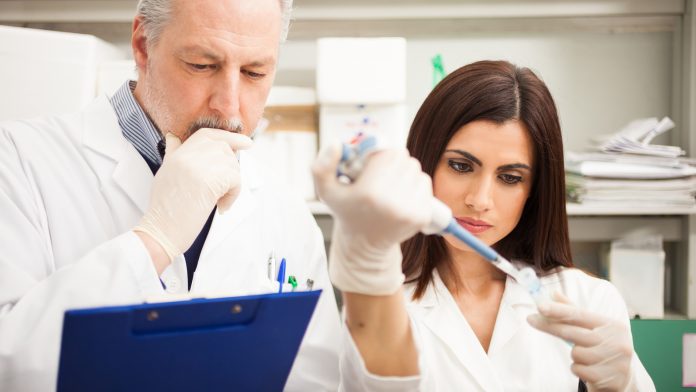
Cedars-Sinai investigators have developed a stem cell and gene therapy combination that potentially protects against motor neuron disease.
Motor neurone disease (MND), also known as ALS, affects the brain and nerves, causing weakness that progressively worsens. There’s no cure for MND, and treatments are available such as physiotherapy; however, researchers have found that a combination of stem cell and gene therapy could be the future for MND.
“Using stem cells is a powerful way to deliver important proteins to the brain or spinal cord that can’t otherwise get through the blood-brain barrier,” said senior and corresponding author Clive Svendsen, PhD, professor of Biomedical Sciences and Medicine and executive director of the Cedars-Sinai Board of Governors Regenerative Medicine Institute. “We were able to show that the engineered stem cell product can be safely transplanted into the human spinal cord. And after a one-time treatment, these cells can survive and produce an important protein for over three years that is known to protect motor neurons that die in ALS.”
Preserving leg function in MND patients
The researchers have developed an investigational therapy using support cells and a protective protein that can be delivered past the blood-brain barrier. They combined stem cell and gene therapy and found it could protect diseased motor neurons in the spinal cord of patients with MND. They reported their findings in Nature Medicine.
The stem cell and gene therapy combination is focused on preserving leg function in patients with MND. The engineered cells could target progressive muscle paralysis, which takes away patients’ ability to move, speak and breathe.
The stem cells were designed to produce a protein called glial cell line-derived neurotrophic factor (GDNF). This protein promotes the survival of motor neurons which are the cells that pass signals from the brain or spinal cord to a muscle to enable movement.
Diseased glial cells become less supportive of motor neurons, causing paralysis. Therefore, by transplanting the engineered protein-producing stem cells into the central nervous system, where the compromised motor neurons are located, these stem cells can turn into new supportive glial cells and release the protein GDNF, which helps the motor neurons to stay alive.
“GDNF on its own can’t get through the blood-brain barrier, so transplanting stem cells releasing GDNF is a new method to help get the protein to where it needs to go to help protect the motor neurons,” said Pablo Avalos, MD, co-lead author on the paper and associate director of Translational Medicine in the Cedars-Sinai Board of Governors Regenerative Medicine Institute. “Because they are engineered to release GDNF, we get a ‘double whammy’ approach where both the new cells and the protein could help dying motor neurons survive better in this disease.”
Are stem cell and gene therapy safe?
The team wanted to ensure that the stem cell and gene therapy was safe and had no negative effects on leg function. To test this, the researchers only transplanted the stem cell and gene therapy into one side of the spinal cord (into one leg) so that the therapeutic effect on the treated leg could be compared to the untreated leg.
The team developed a novel injection called CNS10-NPC-GDNF to safely deliver the stem cell and gene therapy product.
After transplantation, patients were monitored for a year so the team could measure the strength in the treated and untreated legs. The researchers confirmed that there was no negative effect of the cell transplant on muscle strength in the treated leg compared to the untreated leg.
“We’re excited that we proved the safety of this approach, but we need more patients to evaluate the efficacy, which is part of the next phase of the study,” said Johnson, who is also the vice chair of Neurosurgery at Cedars-Sinai. “Proving that we have cells that can survive a long time and are safe in the patient is a key part in moving forward with this experimental treatment.”
The study found no serious side effects of the stem cell and gene therapy combination; however, the researchers discovered that some cells went too high in the spinal cord, ending up in sensory areas, which may have led to instances of pain. They also recorded benign growths associated with stem cell and gene therapy transplantation in some cases. The researchers plan to address this by deeper targeting and a different surgical approach.









